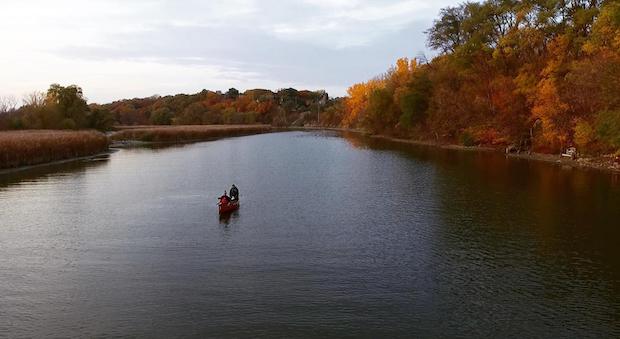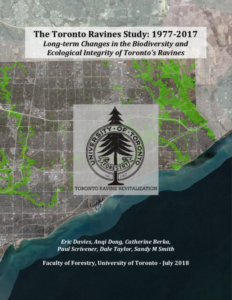

Toronto’s Ravine Ecosystems Under Threat
CanadaEnvironmentEtobicokeInternationalNews Nov 6, 2018 Tierney Angus

By Tierney Angus
Dwindling biodiversity and an increase of invasive species have already begun to harm Toronto’s delicate ravine systems.
Despite Toronto’s commitment to protect the natural spaces found in the city’s ravines, experts warn that the ecological collapse of the system has already begun, as reported by CBC Toronto.
The University of Toronto’s Faculty of Forestry released its Toronto Ravine Revitalization Study: 1977 – 2017 on Nov. 2. The report calls Toronto’s ravines an “ecosystem in decline,” with a “severe and widespread decline in native trees, wildflowers, birds and mammals over the past 40 years.” Out of 73 native woody species, 30 of them have been eliminated in the city, with no or low regeneration of existing native tree species.
The report also highlights the lack of biodiversity of understory vegetation. According to the report, “invasive herbaceous plants – such as garlic mustard, Japanese knotweed, and dog-strangling vine – are now present in over 95% of the forest floor surveyed,” which compete with native species for nutrients and sunlight, choking out the ravines’ native plant life.
The City of Toronto’s Ravine Strategy, released in Sept., 2017, outlined five key principles to guide the city in its management of the ravines: Protect, Invest, Connect, Partner and Celebrate.
Toronto’s Ravine Strategy does not contain specifics about how it will mitigate the effects of a loss of biodiversity. The five guiding principles are broad in nature: For example, the strategy mentions its partnerships with the Toronto and Region Conservation Authority as well as non-profit groups to “identify research needs and to work together to improve the natural environment in our ravines,” but offers no objective targets for improving the health of the ravine ecosystems. The lack of clear language is a problem outlined in the Toronto Ravine Study report, which found “an obvious lack of specificity and explicit requirements regarding ravines in the City of Toronto’s Official Plan.” It also mentions how city by-laws restrict removal of native trees and alterations of ravine landscapes but does not acknowledge species composition as a hallmark of ecological integrity. According to the report, “this gap in the by-law leaves a major opening for long-term ecological damage.”
A decrease in biodiversity is not just a problem specific to Toronto’s ravines. The UN Convention on Biological Diversity, happening this month in Egypt, is focusing on “laying the groundwork for action on biodiversity over the next two years.” Executive Secretary of the United Nations Convention on Biological Diversity, Dr. Cristiana Pasca Palmer, says:
“Biodiversity and the essential services that nature provides are essential for life on Earth. Biodiversity is the basis of our food, medicines, fuel and livelihoods. It is the source of our cultural and spiritual enrichment. By conserving, restoring and sustainably using biodiversity, we ensure that we have viable solutions to present and future challenges, including climate change, water scarcity, food security, sustainable development, and peace and security.”
In an interview with the Guardian, Dr. Pasca Palmer warns that a loss in biodiversity due to deforestation, habitat loss, invasive species and pollutions will only increase in the next 30 years due to climate change. “I hope we aren’t the first species to document our own extinction,” she said.
Locally, small groups of volunteers are working to preserve Toronto’s native species. The High Park Stewards operate programs year-round to eliminate invasive species and increase native plant life. Volunteers from the Elite Invasive Squad get their hands dirty fighting foreign flora: Weeding, planting, buckthorn-busting, and seed gathering workshops take place year-round. Activities are scheduled for every second and fourth Sunday of every month, rain, shine or snow.
Looking for #volunteer hours?? Join us for Buckthorn Busting and Boulevard Beds November the 11th at 10:30AM infront of the Grenadier Restaurant! pic.twitter.com/tOyIeUH9n9
— High Park Stewards (@highparksteward) November 4, 2018
The next buckthorn-busting event is Sun., Nov. 11. at 10:30 a.m. Participants are asked to meet in front of the Grenadier Restaurant.
Efforts from volunteers are important, but experts say stemming the decline of native plant life and biodiversity will be a much bigger issue for the City of Toronto in coming years.

